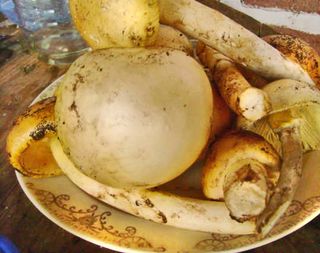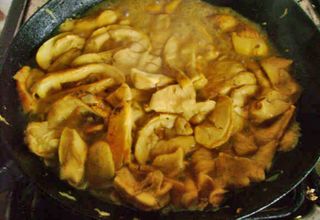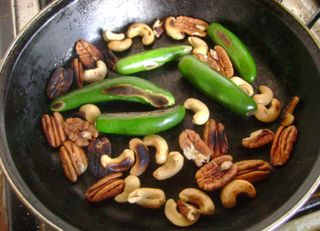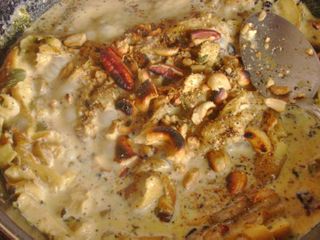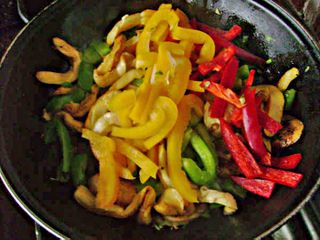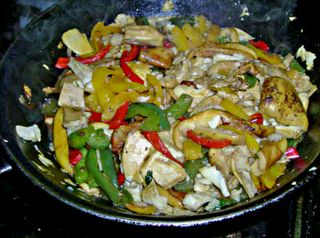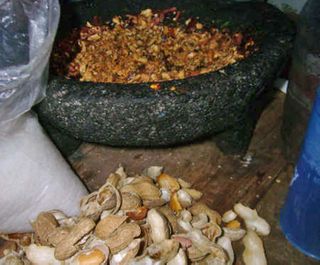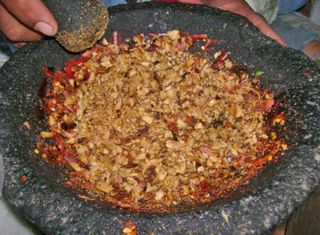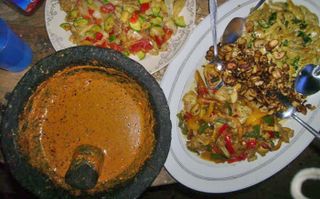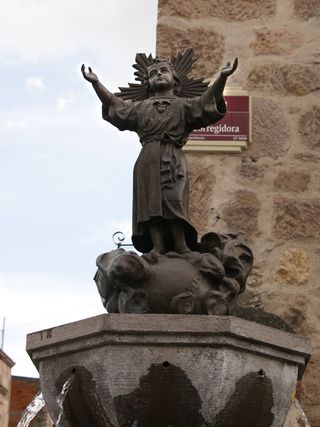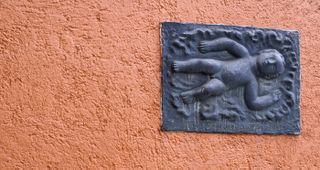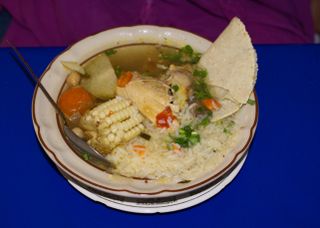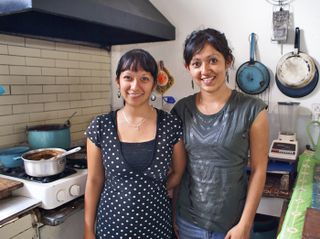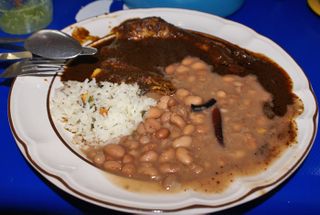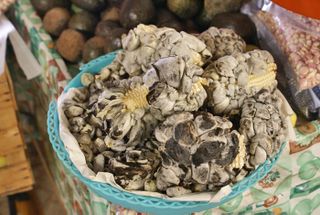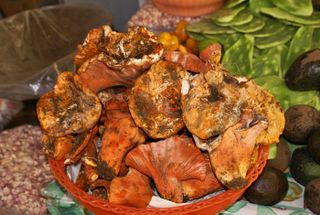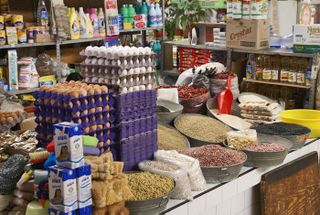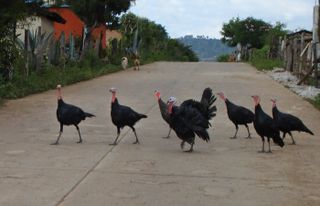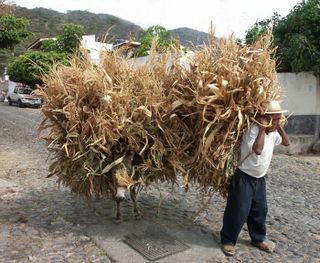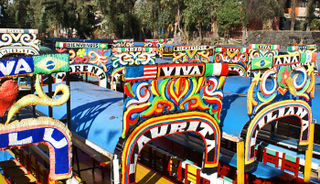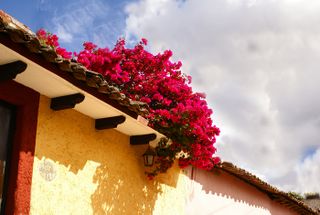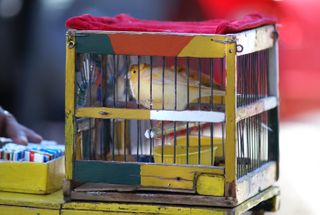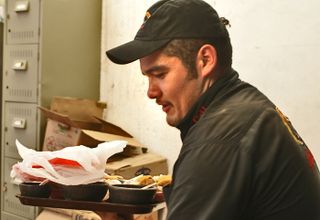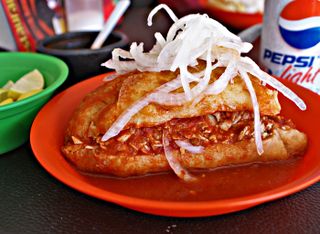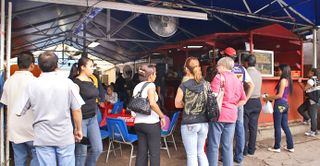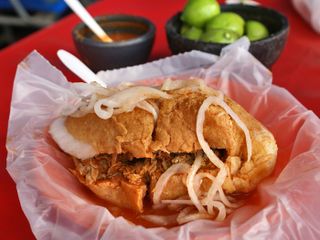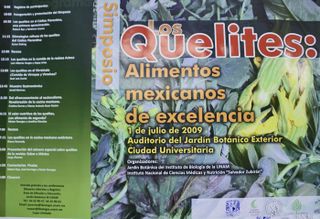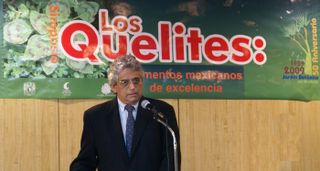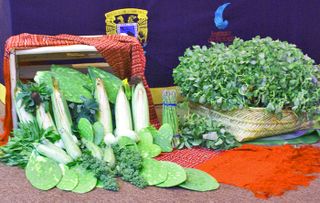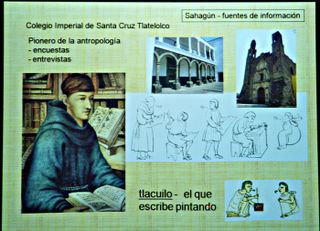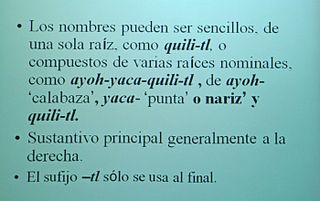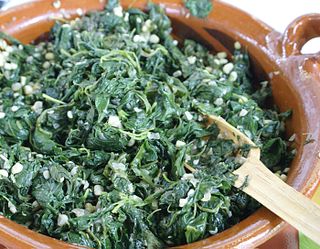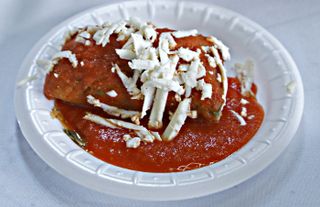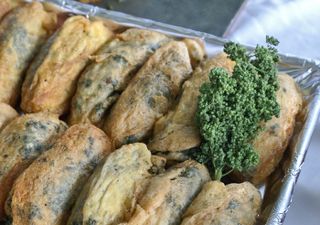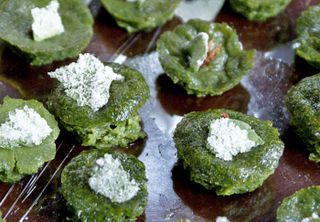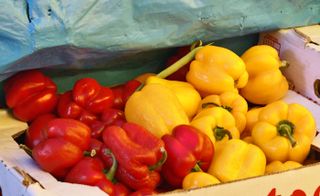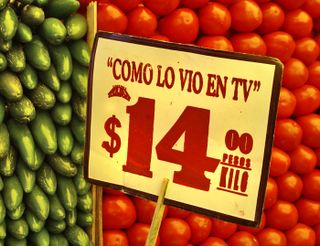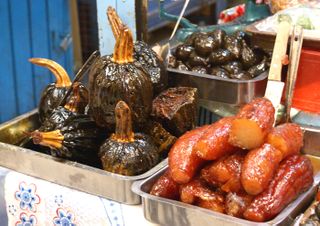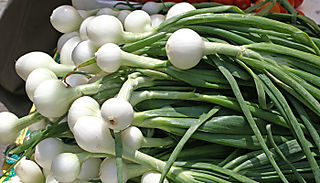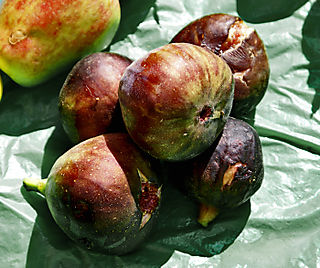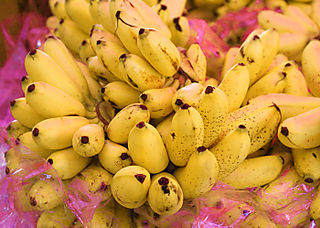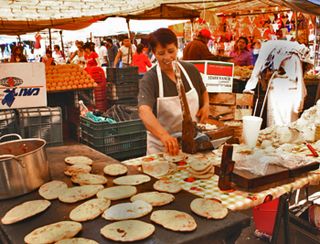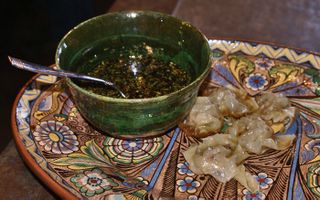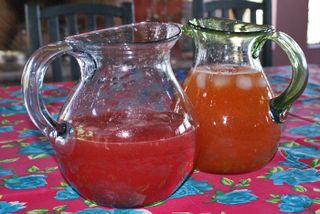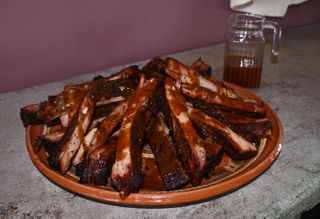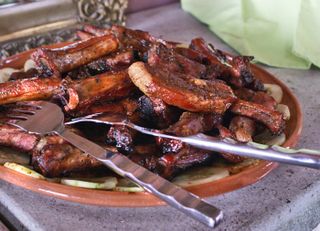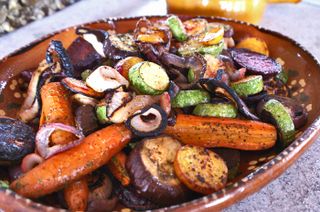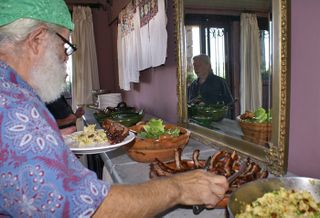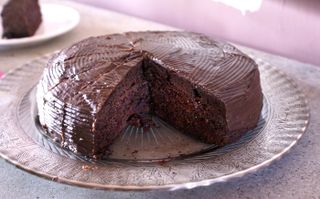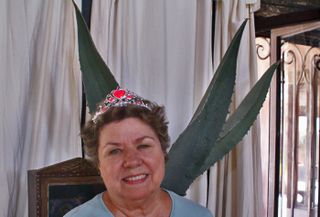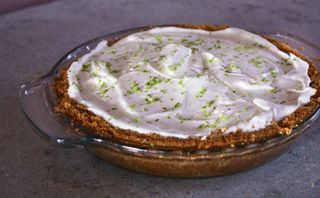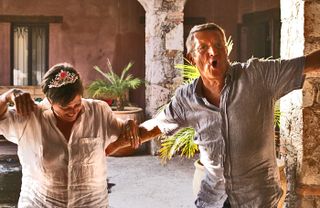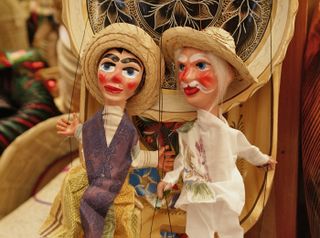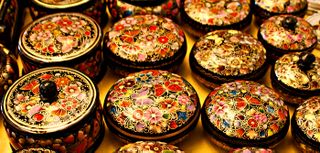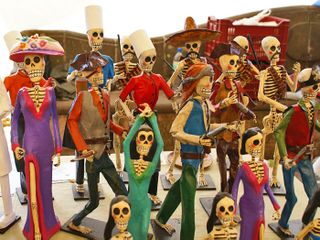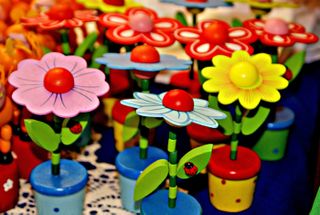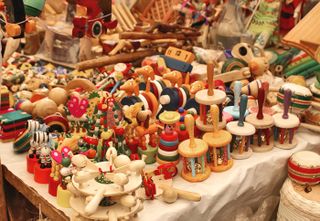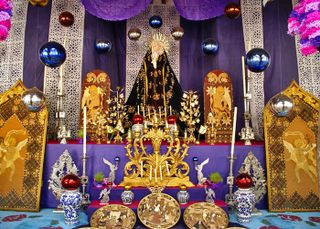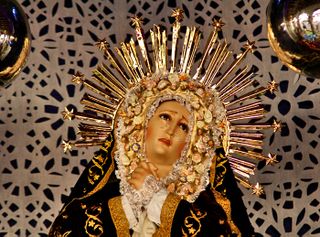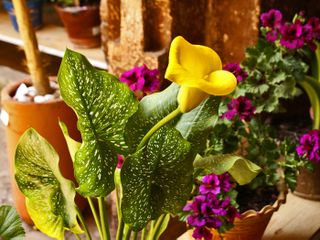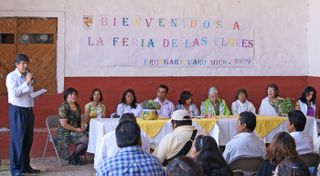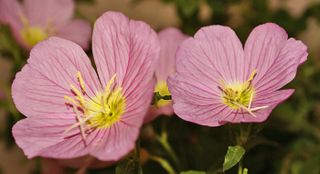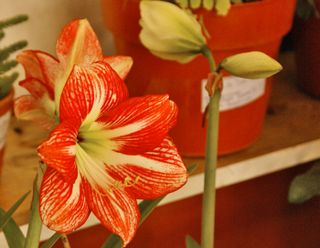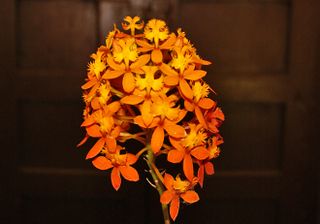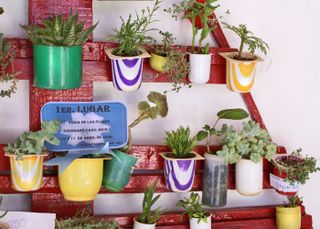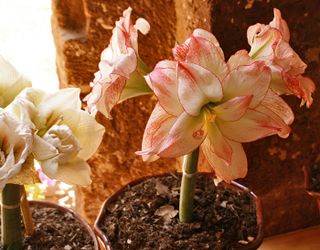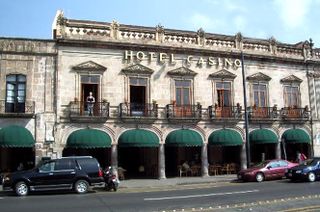
You'll find the Hotel Best Western Turotel Casino at Portal Hidalgo #35 on Avenida Madero in Morelia. The hotel is in the very heart of Morelia's Centro Histórico, just across the street from the Cathedral, Plaza Melchor Ocampo, and the Plaza de Armas. Restaurante LU is on the ground floor of the hotel, with seating indoors as well as outside under the portales (arches).
A few weeks ago Mexico Cooks! received an email from colleague and friend Lucero Soto Arriaga, executive chef at Restaurante LU. "Can you come for comida (Mexico's main meal of the day) at the restaurant on Friday ? I have a big surprise for you!" Could we resist a visit with Lucero, a surprise, or a meal at LU? Of course not!
Mexico Cooks! has dined at the Hotel Casino over the course of many years. The food was always just adequate, and the service was always friendly but lackadaisical. About two years ago, I noticed a radical change in both the menu and in the quality of what was on my plate. I was puzzled. The Hotel Casino restaurant was one of those places where Mexico Cooks! took visiting firemen who wanted to have something to eat while they enjoyed views of Morelia's enchanting Cathedral and main plazas, but I would never have said the restaurant had much of a special touch. Something had definitely changed and Mexico Cooks! wanted to know why.

Lucero Soto Arriaga, the extraordinarily talented young executive chef at Restaurante LU.
The answer turned out to be executive chef Lucero Soto Arriaga's passionate commitment to the traditional regional food of Michoacán and to its essence as well as its evolution. She started her executive chef's career at the hotel in 2004. After three years settling into the job and letting the employees become accustomed to her style of working, Lucero was ready to make big changes in the operation of the restaurant. Her work in the restaurant is a treasured legacy from the former mayora (older woman who holds a kitchen's secrets) at the hotel and from her two childhood nanas (cherished nannies), both of whom were excellent cooks. "But I didn't inherit my passion for the kitchen from my mother," Lucero said with a rueful smile. "When she tries to cook, my mother burns water!"
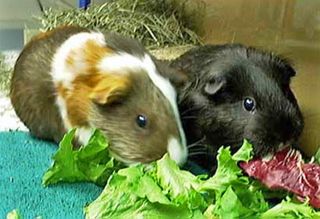
Guinea pigs! Which of the two is Mexico Cooks!?
The big surprise for our Friday comida was a new menu that Restaurante LU will offer in honor of Mexico's bicentennial year, just over the horizon in 2010. Mexico Cooks! was happily a conejo de la india (guinea pig) for the menú bicentenario. Chef Lucero asked for our feedback about the extensive new tasting menu, a series of dishes in small portions which she created for Mexico's 200th birthday celebration.
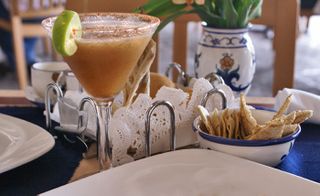
Chef Lucero has developed a new take on the margarita. Our coctel de bienvenida (welcome cocktail) is a delicious mix of tamarindo (tamarind paste)and charanda (high-proof sugar cane alcohol similar to rum, a specialty of Michoacán). A mixture of fine salt and spicy ground chile del árbol rims the glass.
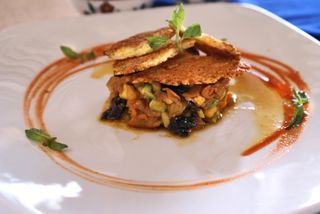
Lucero calls our botana (appetizer) Salmón a Mi Estilo (Salmon My Way). The smoked salmon carpaccio has an incredible list of ingredients: smoked salmon, of course, plus avocado, chile negro, a squeeze of limón, a sweet and sour marinade, and a touch of chocolate. The golden 'lid' is a chicharrón de queso cotija, which adds both crunch and a savory finish to the appetizer.
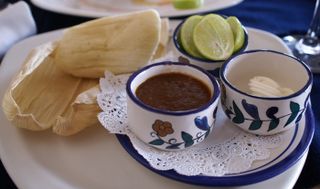
Traditional tamalitos de harina (small wheat flour tamales) from the region around Lake Pátzcuaro, served in place of bread, arrived with butter, smoky, deep-flavored salsa, and limón. Cooked al vapor (steamed), these tamalitos are reminiscent of Chinese steamed bread in both texture and flavor.

Next up were foods representing the three pre-Hispanic cooking methods: hervido (boiled), al vapor (steamed), and atápakua (stewed), plus a tiny brazier filled with salsa tzirita.
In the centuries prior to the arrival of the Spanish, the land that would eventually become Mexico counted on three basic methods of cooking: boiling, steaming, and stewing. Corn was the staple ingredient, the source of all life, and had been cultivated in the new world for well over 4,000 years prior to the Spanish conquest.
In addition to corn, the Spanish discovered that indigenous peoples of New Spain ate a widely varied diet: beans, squash, wild vegetables including cactus, quelites and hongos (mushrooms), tomatoes, various seeds, nuts, and chiles, along with hunted or captured animals, birds, fish and amphibians, and insects.
Chef Lucero planned the menú bicentenario to reflect cooking
styles and ingredients that have evolved in the New World over the
course of time, starting with the pre-Hispanic kitchen. Pictured in the photo above, starting at four o'clock are: tacos of atápakua made with squash flowers, peanuts, and honey; a miniature corunda (typical regional tamal from Michoacán); rescoldo de hongos (mushrooms wrapped in a corn husk and cooked in the embers of the brazier) at eleven o'clock); and in the center, a tiny olla (clay pot) filled with churipo, a meat, chile, and vegetable soup native to Michoacán. On the side of the plate is a miniature brazier filled with salsa tzirita, made with roasted chile seeds, tomate verde (tomatillos), and a hint of mint.
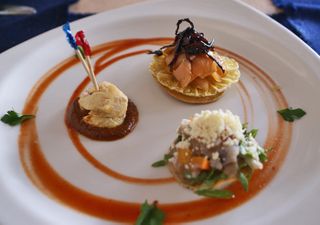
The Spanish colonial era brought us, clockwise from four o'clock, tostadas de patita (pigs feet tostada), pollo en cuñete (chicken cooked in a covered clay pot), and salmón en escabeche dulce (salmon in sweet and sour pickling sauce), served on a tiny tostada topped with a dehydrated orange slice and shredded locally-grown chile chilaca.
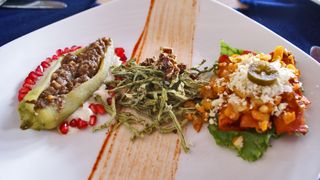
Chile güero en nogada (stuffed 'blond' chile in nut sauce) and enchiladas placeras morelianas (plaza-style enchiladas from Morelia) flank dried nopal cactus strips–with the eagle perched on top. The dish symbolizes Mexico's green, white, and red flag, proudly flown since independence in 1821.
The era of Mexico's fight for independence (1810-1820) brought the creation of dishes designed to show off not only the intense flavor combinations of indigenous and Spanish cuisines, but also highlighted the green, white, and red of the Mexican flag. The meal most associated with the weeks closest to Independence Day (September 16) is chiles en nogada (stuffed chiles poblanos in creamy walnut sauce, left side of the plate). Chef Lucero prepared this traditional dish using the small chile güero (blond chile) rather than the much larger chile poblano. The list of ingredients for the chile's filling is long and complicated: chopped beef, quince, pear, Asian pear, apple, peach, sugared, dried pineapple, sugared, dried cactus, plums, raisins, almonds, and macadamia nuts, plus spices and herbs. The roasted and stuffed chile is surrounded by its traditional walnut sauce (made from in-season fresh walnuts) and pomegranate seeds.
On the right side of the same plate is a small serving of enchiladas placeras estilo moreliano (plaza-style enchiladas as prepared in Morelia). The three enchiladitas (little enchiladas) are no more than three inches long. Dipped in sauce and rolled, they're topped with carrots, potatoes, a sprinkle of finely grated cheese, and a wee wheel of chile jalapeño en escabeche (pickled chile jalapeño).
Chef Lucero's sense of humor is apparent in the center of the plate: shreds of dehydrated nopal cactus, topped with a mix of chile with minced caramelized pepitas (pumpkin seeds). "It symbolizes the eagle on the nopal–the shield on the Mexican flag," she explained with a grin. We weren't quite convinced about the effect of the symbolism, but we loved the mix of flavors.

Restaurante LU served this traditional but very updated dessert: ate de guayaba con queso (guava paste with cheese). Its tremendously delicious combination of flavors was the perfect end to our comida.
When we were almost-but-not-quite stuffed, our waiter presented the special dessert del tiempo actual (today's era) for the menú bicenentario. Lucero's dessert recipe for the classic combination of ate de guayaba (guava paste) with cheese is based on traditional flavors and textures, but lifted to a level only possible given today's high-tech kitchens. Mexico Cooks! wouldn't dream of giving away the multiple delicious surprises literally at every level of this concoction, but will say only: don't miss it. At once sweet and savory, it's a standout.
We Mexico Cooks! guinea pigs were completely enthralled with the new menú bicentenario at Restaurante LU. As we talked about culinary philosophy and related ideas after our meal, Chef Lucero was adamant that the first ingredient in her gastronomic repertoire is respect: respect for the essence and tradition of the foods she prepares, respect for the knowledge and experience of those who have come before her, and respect for the ingredients that she uses to create meals that are at once firmly based in regional products and completely cocina del autor–her own creations. There isn't another restaurant in Morelia where we've found a more exacting, exciting, and innovative kitchen. Pair those attributes with Chef Lucero's devotion to local and regional cuisine and you'll call Restaurante LU what Mexico Cooks! calls it: very simply, the best restaurant in the city.
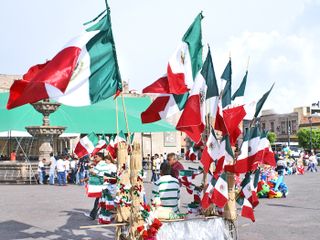
Felices Fiestas Patrias 2009! Qué viva México!
Looking for a tailored-to-your-interests specialized tour in Mexico? Click here: Tours.
